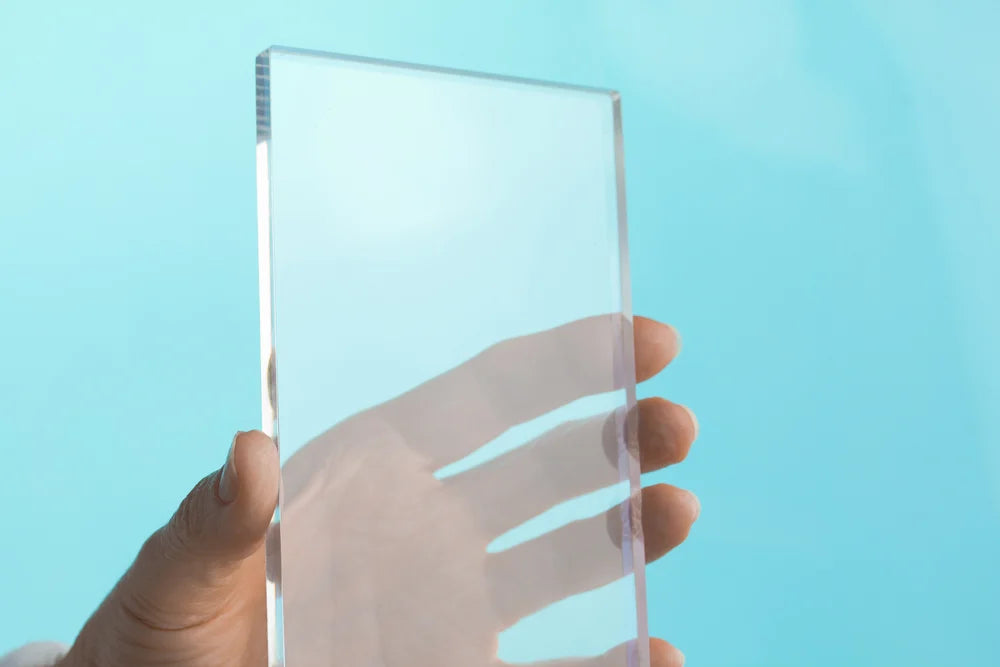
Acrylic: Advantages and Disadvantages You Need to Know
Share
Acrylic is a versatile and widely used material in various industries, from retail displays to medical devices and home decor. While it offers numerous benefits, it's essential to understand both its advantages and disadvantages to make an informed decision for your project. In this blog, we’ll delve into the key pros and cons of using acrylic.
Advantages of Acrylic
1. Optical Clarity and Transparency
Advantage: Acrylic is known for its excellent optical clarity and high transparency, allowing up to 92% of light to pass through it. This makes it ideal for applications such as display cases, windows, and signage where clear visibility is essential.
2. Durability and Impact Resistance
Advantage: Acrylic is much more impact-resistant than glass. It can withstand significant stress and pressure without breaking, making it a safer option for environments where safety is a concern, such as in schools, hospitals, and busy retail spaces.
3. Lightweight
Advantage: Acrylic is significantly lighter than glass, making it easier to handle, transport, and install. This reduces shipping costs and simplifies the installation process, especially for large-scale projects.
4. Versatility in Design
Advantage: Acrylic can be easily cut, molded, and formed into various shapes and sizes. This flexibility allows for endless design possibilities, making it a favorite among designers and fabricators for custom projects.
5. Weather Resistance
Advantage: Acrylic is resistant to UV light and weathering, which means it does not yellow or become brittle when exposed to sunlight. This makes it an excellent choice for outdoor applications, such as signs and barriers.
6. Cost-Effective
Advantage: Acrylic is generally more cost-effective than glass and other materials. Its lower production and maintenance costs, combined with its durability, result in long-term savings.
7. Easy Maintenance
Advantage: Acrylic is easy to clean and maintain. It can be wiped down with a mild soap and water solution, and minor scratches can often be polished out, keeping the material looking new for longer.
8. Aesthetic Appeal
Advantage: Acrylic offers a modern, sleek appearance with a glossy finish. It can be tinted in various colors, enhancing the aesthetic appeal of any project, from furniture to decorative items.
9. Eco-Friendly Options
Advantage: Many acrylic products are recyclable, contributing to environmental sustainability. This makes acrylic a greener choice for those looking to reduce their environmental footprint.
Disadvantages of Acrylic
1. Scratch Susceptibility
Disadvantage: Acrylic is more prone to scratches compared to glass. While minor scratches can be polished out, frequent or severe scratching can affect the material's appearance over time.
2. Lower Heat Resistance
Disadvantage: Acrylic has a lower heat resistance than glass and can warp or melt if exposed to high temperatures. This limits its use in applications where it might be subjected to intense heat.
3. Chemical Sensitivity
Disadvantage: Acrylic can be damaged by certain chemicals, such as solvents and cleaning agents. This requires careful consideration of the cleaning products and environments in which it will be used.
4. Potential for Cracking Under High Stress
Disadvantage: While acrylic is impact-resistant, it can still crack or shatter under very high stress or impact. It’s essential to consider the specific requirements of your project to ensure acrylic is the best choice.
5. Cost Relative to Other Plastics
Disadvantage: Although acrylic is cheaper than glass, it is more expensive than other plastics, such as polycarbonate. This can be a consideration for budget-conscious projects where the benefits of acrylic may not outweigh the cost difference.
Applications of Acrylic
Despite its disadvantages, acrylic's benefits make it suitable for a wide range of applications, including:
- Retail Displays: Clear and attractive displays that enhance product visibility.
- Medical Devices: Durable and hygienic equipment for healthcare settings.
- Signage: Eye-catching and weather-resistant signs for both indoor and outdoor use.
- Interior Design: Modern and stylish furniture and decor.
- Protective Barriers: Durable and clear barriers for safety in public spaces.
- Art and Décor: Versatile material for creative and innovative designs.
Conclusion
Acrylic is a highly versatile material with many advantages that make it an excellent choice for a variety of projects. Its clarity, durability, and design flexibility offer numerous benefits, while its potential drawbacks, such as scratch susceptibility and lower heat resistance, require careful consideration. By understanding both the advantages and disadvantages of acrylic, you can make an informed decision and ensure the success of your project.
If you’re ready to explore the possibilities of acrylic for your next project, contact The Acrylic Factory today. Our expert team is here to help you design and create high-quality acrylic products tailored to your needs.
